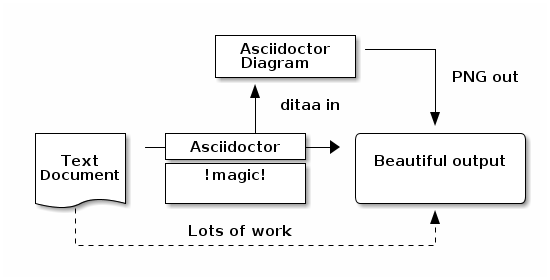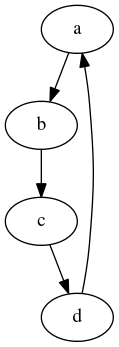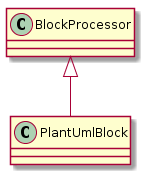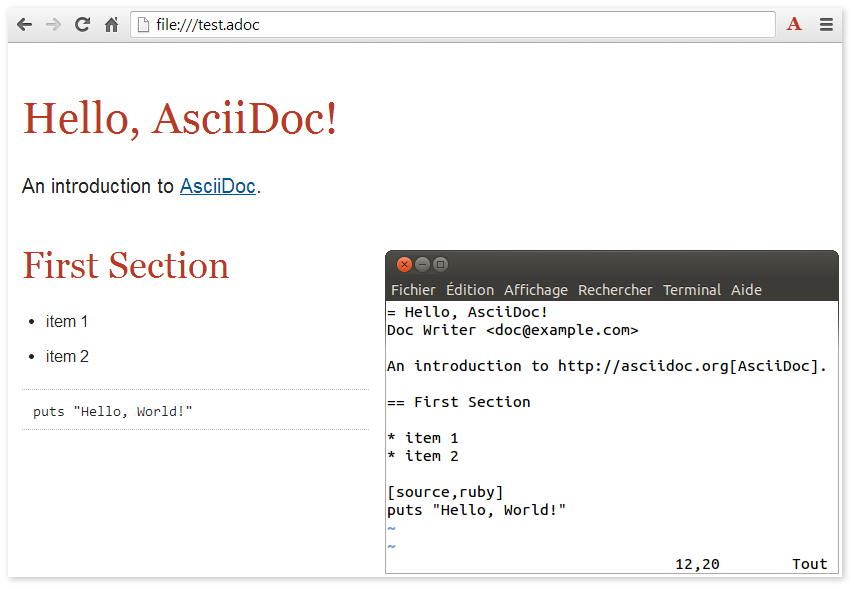AsciidoctorJ 1.5.0 released!
by -
We’re thrilled to bring the latest Asciidoctor milestone, Asciidoctor 1.5.0, to the JVM as AsciidoctorJ 1.5.0!
Resolved Issues
The following issues have been resolved in version 1.5.0:
-
Added methods to register extensions to AsciidoctorJ which can be written in Ruby or Java. Resolves #90 and #157.
-
Creates an SPI so Java extensions can be registered automatically by simply adding the jar inside classpath. Resolves #97
-
Extension API is updated with modifications done in Asciidoctor 1.5.0. Resolves #113, #114, #148, #162 and #166.
-
Provides a method to unregister any extension previously registered. Resolves #122
-
Added
-rand-Iflags to CLI classes to require additional Ruby scripts and append to the load path, respectively. Resolves #171. -
Added
-Vand--versionflags to CLI classes. Resolves #87 and #117. -
Adds integration with the Asciidoctor EPUB3 project. You can set
epub3as a backend. Resolves #168 and #179 -
Updates
AbstractBlockclass withfindBymethod. Resolves #164 -
Updates
Documentclass to be aligned withAsciidoctor::Documentso getting a title can return aTitleclass with title, subtitle instead of as String with full title. Resolves #167 -
Promotes attributes
sectnumlevels,hardbreaks,appendix-caption,stem,hide-uri-schema,nofooter,source-languageandcompat-mode. Resolves #91, #92, #94, #105, #121, #129, #144 and #163. -
You can get the Ruby instance used in AsciidoctorJ from
JRubyRuntimeContextclass. Resolves #93 -
Fixes a bug with Ruby instance and
Attributesclass which prevented the Gradle plugin from working properly. Resolves #96 -
Skips files and directories that begin with an underscore (_) in
AsciiDocDirectoryWalker. Resolves #124 -
Adds
slf4jas logging system. Resolves #126 -
Fixes a bug with
base_dirand Ruby environment. Resolves #135 -
Document objects like
Section,Block,Node,Document, … are moved to theorg.asciidoctor.dompackage. -
Updates Java version to Java 7. Resolves #176
For more information about issues fixed in this release, please see the 1.5.0 milestone in the issue tracker!
Migration
The artifactId changed from asciidoctor-java-integration to asciidoctorj starting in 1.5.0.
You should now use the following dependency stanza in your project’s pom.xml file:
<dependency>
<groupId>org.asciidoctor</groupId>
<artifactId>asciidoctorj</artifactId>
<version>1.5.0</version>
</dependency>When upgrading to Asciidoctor 1.5.0, please refer to the migration guide for details about how to migrate your content. We also encourage you to browse the release notes for Asciidoctor 1.5.0.
|
Asciidoctor 1.5.0 introduced many changes internally and to the public API. For example, the extension API has been modified in non-trivial ways, so you’ll like need to update your extensions to the new API when upgrading to this release of AsciidoctorJ. |
Visit the updated AsciidoctorJ manual to learn how to install and use AsciidoctorJ.
This release makes way for new releases of the Gradle plugin, Maven plugin and Asciidoclet, all of which are based on AsciidoctorJ. Look for those announcements to follow!









